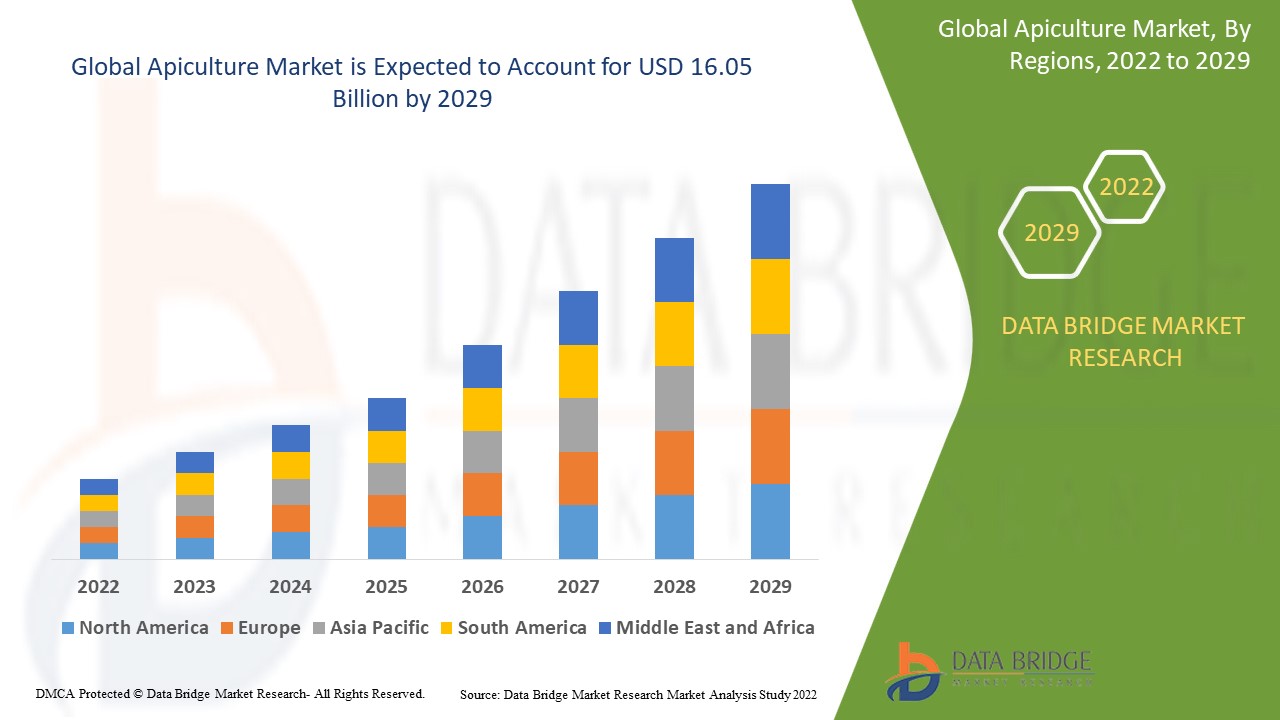
Apiculture: Nurturing Nature’s Sweetest Gift
Introduction:
Apiculture, the art and science of beekeeping, is a practice that has mesmerized and nourished humanity for centuries. At its core, it revolves around the delicate, yet awe-inspiring world of bees and their vital role in our ecosystem. This guest post delves deep into the enchanting realm of apiculture, unraveling its roots, various segments, historical evolution, present-day trends, and the factors propelling its growth.
Definition of Apiculture:
Apiculture is the practice of raising and maintaining colonies of bees, primarily for the purpose of harvesting honey, beeswax, and other valuable bee-related products. The term “apiculture” is derived from the Latin word “apis,” which means bee, and “cultura,” which means cultivation. In essence, apiculture involves the cultivation and care of bees to encourage their efficient honey production and pollination services.
Segments of Apiculture:
Honey Production:
Honey is the most well-known and cherished product of apiculture. Beekeepers carefully manage bee colonies to maximize honey production. The honey harvested comes in various flavors and colors, depending on the types of flowers the bees forage on.
Beeswax:
Beeswax, another valuable product, is used in various industries, including cosmetics, pharmaceuticals, and candle making. Beekeepers extract beeswax from the combs created by bees.
Pollination Services:
Bees play a crucial role in pollinating a wide range of plants, including many of the crops we rely on for food. Commercial beekeepers provide pollination services to agriculture, enhancing crop yields and overall food security.
Propolis, Royal Jelly, and Bee Venom:
Apiculture also produces less common bee products, such as propolis, royal jelly, and bee venom, each with unique uses in medicine and cosmetics.
The Evolution of Apiculture:
The history of apiculture is a rich tapestry that has been woven for millennia. Honey harvesting dates back to ancient civilizations, with the earliest recorded evidence of beekeeping found in ancient Egypt around 2400 BC. In the ancient world, honey was not only a source of sweetness but also held religious significance and was used in the embalming process.
As time progressed, beekeeping practices spread across the globe, with various cultures developing their methods and hives. For instance, ancient Greeks and Romans created some of the first beekeeping manuals, showcasing the enduring human fascination with bees.
In more recent history, the movable frame beehive, invented by Reverend Lorenzo Lorraine Langstroth in 1851, revolutionized beekeeping. This innovation allowed beekeepers to inspect hives easily, reduce stress on the bees, and improve honey production. Today, modern beekeeping techniques and technology continue to evolve, emphasizing sustainability and bee welfare.
Trends in Apiculture:
Sustainability:
With growing concerns about pollinator declines and environmental conservation, sustainable beekeeping practices have gained prominence. Beekeepers are increasingly adopting eco-friendly methods and minimizing the use of pesticides.
Organic Honey:
The demand for organic and locally sourced honey has surged, driven by consumer preferences for natural, unadulterated products. Organic beekeeping practices are becoming more common.
Urban Beekeeping:
Urban beekeeping has seen a resurgence, with city dwellers keeping beehives on rooftops, balconies, and in community gardens. This trend promotes pollination and connects urban populations with the importance of bees.
Technological Advancements:
Technology is transforming apiculture, with the use of sensors, data analytics, and monitoring systems to track hive health and productivity. This tech-driven approach enhances beekeeping efficiency.
Factors Driving Growth in Apiculture:
Agriculture and Food Production:
Apiculture plays a pivotal role in agriculture and food production through pollination services. As global food demands increase, so does the need for healthy bee populations.
Health and Wellness:
The health-conscious consumer trend drives the demand for natural products, such as honey and bee-related products. Honey, royal jelly, and propolis are touted for their potential health benefits.
Environmental Concerns:
Growing environmental awareness and concerns about biodiversity loss have sparked interest in apiculture as a means of supporting pollinators and preserving ecosystems.
Economic Viability:
Apiculture can be a lucrative business, making it an attractive option for entrepreneurs and farmers. The potential for income from honey production, pollination services, and value-added products encourages industry growth.
To know more visit : https://www.databridgemarketresearch.com/reports/global-apiculture-market
In Conclusion:
Apiculture, the age-old practice of beekeeping, has come a long way from its humble origins. It has evolved into a dynamic industry with diverse segments and a promising future. As we navigate an increasingly complex world, the trends in apiculture reflect a deepening appreciation for the essential role of bees in our ecosystem. Factors driving growth encompass everything from economic opportunities to environmental stewardship.
In our journey through the world of apiculture, we’ve explored the definition, various segments, historical evolution, current trends, and the factors propelling its growth. The sweet rewards of apiculture extend far beyond the delicious honey it yields. They embrace a world where human ingenuity, nature’s wonders, and ecological harmony meet, proving that in caring for the bees, we are nurturing one of nature’s sweetest gifts to humankind.



